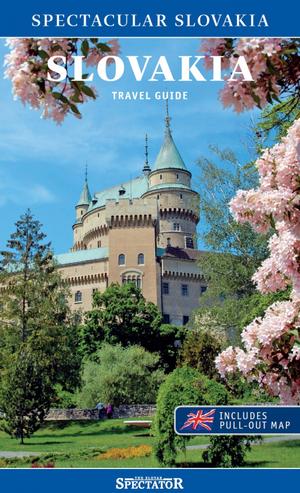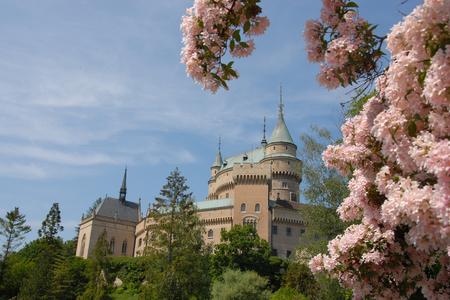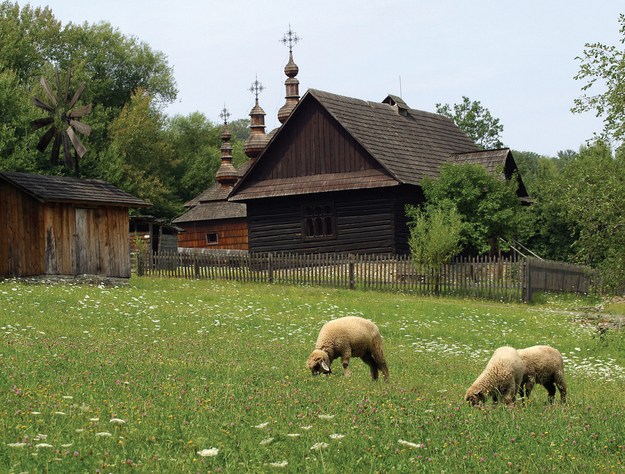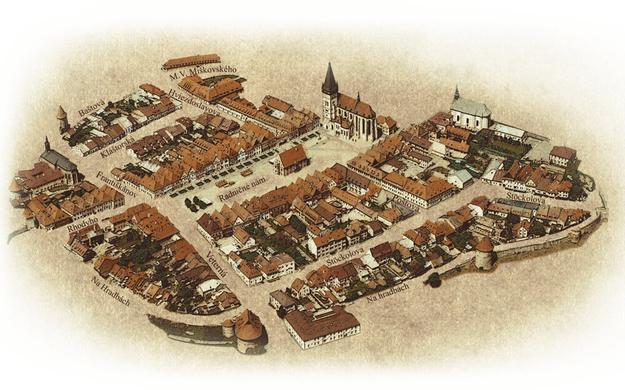This is an article from our archive of travel guides Spectacular Slovakia. We decided to make this gem available to our readers, making only necessary adjustments. Some of the writer’s observations from the year 2004 have changed but much still holds true. For up-to-date information and feature stories, take a look at the latest edition of our Spectacular Slovakia guide.
While teaching English in 1998, I had a beautiful brunette student named Martina. Martina was a graphic designer at a magazine in Bratislava. She wore angular blue skirt-suits, and had the lovely habit of blushing every time she said anything. One day, I asked her out.

"I can't," she said, blushing deeply. "I'm going to my grandparents' this weekend help them kill a pig."
A hundred years ago, 70 percent of Slovaks were subsistence farmers. Slovakia industrialized and urbanized only after WWI, and today, most Slovaks are no more than a few generations from the village. Many still have family in the countryside, and I rarely meet a Slovak who hasn't, for example, participated in, or at least witnessed, the slaughter of a pig (zabíjačka). Slovaks tend to smile nostalgically when talking about zabíjačky and other hallmarks of village life - the village-wide PA systems, the moonshine, the widows who dress in black on Sundays, the absence of agricultural zoning.
The wooden church of Hervatov
I was thinking about this in Hervartov, a village near Bardejov, where the first sound I heard was a cow mooing. It sounded like it was coming from the inside of a house on the village's only big street.
I had come to Hervartov to see the village's wooden church, which, on a hill on the far side of town, looked like a giant brown rooster. It had a rounded nave, a tower like a thick, bulging neck, and layered shingles that looked like feathers.
A sign on the church said the keykeeper lived at village house number 19. I started walking that way, but then I heard voices inside the church. It turned out the keykeeper had already been roused by tourists from Glasgow.
The church, I learned from the keykeeper, was the oldest of 27 wooden churches registered in Slovakia as national cultural monuments. It was built around 1500.
"See that painting?" she said. Three long-faced women in robes and crowns were painted on a wall. One of them held a baby with curly blonde hair and a serious, adult face.
"It was finished in 1460, but it was painted over during the reformation," she said. "They replaced Jesus with a wheel. For hundreds of years, Mary held a wheel in her arms."
"The Protestants forbid icons of Mary," she explained. "Without Jesus, the painting looked like three random women. In 1985, an art professor discovered Jesus underneath, and restored the painting."
"Hmm," I said. I looked down at a lamenated fact sheet the keykeeper had given me. I asked her about a word - babinec.
She pointed to an anteroom in back of the nave. There were three rows of pews.
"That's where women with babies sat," she said. "That way, if the babies started crying, it wouldn't disturb everyone."
What a great idea, I thought.
Coming into Hervartov, I had noticed a new church being built-with cement, bricks and metal.
"You still use this church, right?"
"Oh yes," the keykeeper said. "But the village is getting too big for just one church."
"How many people live here?"
"Almost six hundred."
I saw another wooden church at a skanzen, or outdoor museum, near Bardejov. I spent an hour looking at it, and at log cabins, mills, barns, a bell tower, a pigsty, and much more. I had been to skanzeny before. Slovakia has 10 of them. It was pleasant, but I always end up thinking - this isn't much different than a living Slovak village. I saw a hayloft like the one I had slept in a month before, and a big wooden hammer like one still splitting wood in Vlkolínec.
The other thought I had was - man, Slovaks make a lot of things out of wood: churches, hammers, schoolhouses, cradles, spoons, forks, barrels, benches, bath tubs, busts of Jesus ...
A spa treatment is a medical affair in Bardejov
I spent the night in Bardejovské Kúpele, a large spa a few kilometers north of Bardejov. Slovak spas are self-contained worlds. On their grounds are places to stay, eat and drink, concert halls, cinemas, dances, gardens, trails, pools, and tennis courts. Regular tourists are welcome at many of them, but in general, Slovak spas are geared toward the sick. The average spa-goer is old and infirm, and the staff is official and rigid, like at a hospital.
I wanted to have a mineral bath, which in spa lingo, is called a "cure" or "treatment." There are many other cures. A chart in Bardejov listed about 40, including 'Scottish Sprays,' 'Gas Injections' and 'Group Inhalation.'
"I'd like a bath," I said to the woman at the booking window.
"Have you had an examination?"
"No." I said.
She looked me over disapprovingly. "Wait a half hour," she said, "then go down that hall there on the left, and knock on room 264."
A half hour later, I knocked on room 264. A nurse admitted me, had me sit down, and listened to my heart with a stethoscope.
"What cure do you want?" she said.
"A mineral bath," I said.
She put down the stethoscope and wrote out a prescription. I took it back to the booking window and made an appointment.
The bath was pleasant - 15 minutes in a metal tub filled with hot, rusty, bubbly water. I stood, naked, and an attendant wrapped me in a sheet. I lay in the cocoon for 10 minutes, got up, dressed and left.
The foreigner price for a bath
My body was releaxed, but my mind was in knots. I had paid a foreigner price for the bath, about Sk500, or three times the regular price.
I went to the General Director's office for a refund. He was out. His secretary sent me to the marketing department.
"There must be a mistake," a tall brunette said. "Who said we have foreigner prices?"
She picked up the phone and smiled at me, tapping the eraser end of a pencil on her lips.
She put the phone down. "I figured it out," she said. "You misunderstood. We don't have foreigner prices. Guests at our hotels get a discount. Your hotel doesn't belong to our spa."
"So a Slovak staying at my hotel would pay the same price?"
"No," she said. "Slovak walk-in customers also get the discount."
"Can I have the discount?"
"You'll have to ask the general director."
I went back to the office of the general director. He was still out, but the second in command agreed to see me.
We sat at a long wooden table. The second in command was a middle-aged woman in a wine-red skirt suit. She had the semi-feathered, semi-bowl haircut common among Slovak women over 40. I unfolded my receipt and laid it on the table. She looked it over.
Our Spectacular Slovakia travel guides are available in our online shop.
"Slovaks earn a quarter of what people in Western countries make," she said, finally. "When we go abroad no one gives us a discount."
"Right," I said. "Everyone pays the same."
"Which is four times more expensive for us."
"No," I said. "It's the same."
"Right," she said. "Which is more expensive."
She folded her hands on the table. We looked at each other.
"That's a complicated debate," I said. "But it doesn't matter, because I don't live in the West. I live here. I earn crowns. I learned how to conjugate your verbs."
"But you aren't Slovak."
"You said you charge different prices because Westerners earn more," I said. "But I don't earn more."
"But you have a foreign passport," she said.
"You could make an exception."
"Rules are rules." She said.
"You're lane of the people who set the rules."
"Then every tourist will want a discount."
"How will they know?" I said.
There was a long, silent moment, and then she gave me a strained smile.
"All right," I said. "Thanks for your time."
I stood up. The second in command stood up with me. My receipt was still unfolded on the table.
"What are you doing in Slovakia, anyway?" she said.
"Writing a travel guide."
"Travel guide?" she said. She placed her hand on my receipt. "Are you going to write about our spa?"
"Yes," I said.
"Good things?' she said, raising an eyebrow.
"I don't know," I said.
She picked up the receipt and studied it.
"Well, maybe we could do something about this," she said. "Why don't you tell me exactly what you're going to write?"
The peculiar unknown sight in Bardejov
There was only one more thing I wanted to see in Bardejov. I stopped by the tourist office to find out where it was.
"It's on the side of the town hall," said Katarína Smelá. "Right along the eaves."
I went to the town hall, but I couldn't find it.
"I close in half an hour," Katka said. "Come back then, and I'll take you."
A half hour later, we were outside the town hall, looking at a statue of a gargoyle. The gargoyle was bent over, spreading open the cheeks on his backside. Katka said it was the architect's final touch on the building.
"He and the city leaders had an argument over money," she explained.
"Hmm," I said. "I thought it would be more...I didn't expect it to be so..."
"You thought it would be more decent?" Katka said.
"Yeah," I said. "I didn't expect it to be so... detailed."
Spectacular Slovakia travel guides
A helping hand in the heart of Europe thanks to the Slovakia travel guide with more than 1,000 photos and hundred of tourist spots.
Detailed travel guide to the Tatras introduces you to the whole region around the Tatra mountains, including attractions on the Polish side.
Lost in Bratislava? Impossible with our City Guide!
See some selected travel articles, podcasts, traveller's needs as well as other guides dedicated to Nitra, Trenčín Region, Trnava Region and Žilina Region.





